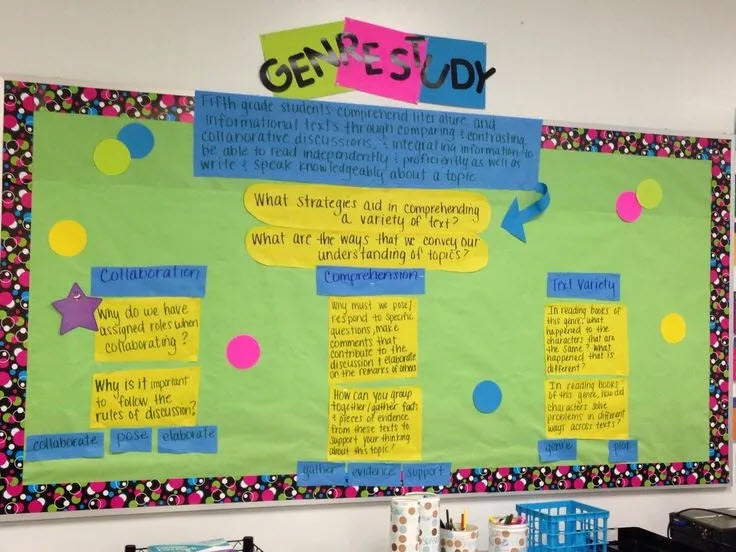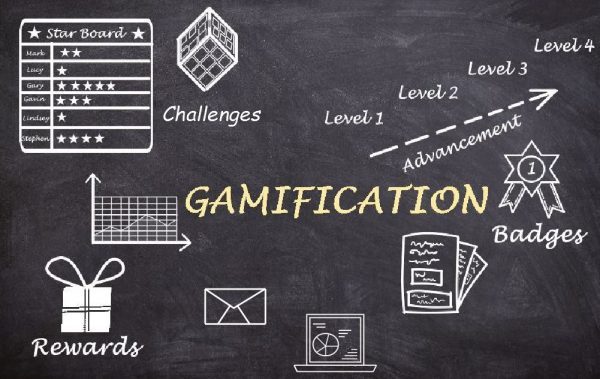The objective of this first assignment was to complete the provided planner to complete the first portion of Stage One of the Learning Map. In Blackboard, we were provided with a few examples of completed planners that we might find useful. The lesson I am using for this assignment is titled: Virtual Roller Coaster Design. Before starting, we were to review the three Learning Map documents in Blackboard that define the Stages and Elements of the Learning Map and provide a visual of the entire Learning Map.
Identify your Lesson Standard(s)
CA Content Standard(s)
List the Standard(s)
- CCSS.MATH.CONTENT.HSG.MG.A.1: Use geometric shapes, their measures, and their properties to describe objects (e.g., modeling a tree trunk or a human torso as a cylinder).
- CCSS.MATH.CONTENT.HSG.GMD.A.3: Use volume formulas for cylinders, pyramids, cones, and spheres to solve problems.
- CCSS.MATH.CONTENT.HSG.MG.A.3: Apply geometric methods to solve design problems (e.g., designing an object or structure to satisfy physical constraints or minimize cost; working with typographic grid systems based on ratios).
- CCSS.MATH.CONTENT.HSG.CO.A.1: Know precise definitions of angle, circle, perpendicular line, parallel line, and line segment, based on the undefined notions of point, line, distance along a line, and distance around a circular arc.
- CCSS.MATH.CONTENT.HSG.CO.C.10: Prove theorems about triangles. Theorems include: measures of interior angles of a triangle sum to 180°; base angles of isosceles triangles are congruent; the segment joining midpoints of two sides of a triangle is parallel to the third side and half the length; the medians of a triangle meet at a point.
- CCSS.MATH.CONTENT.HSG.SRT.C.8: Use trigonometric ratios and the Pythagorean Theorem to solve right triangles in applied problems.
- CCSS.MATH.CONTENT.HSG.SRT.D.11: Understand and apply the Law of Sines and the Law of Cosines to find unknown measurements in right and non-right triangles (e.g., surveying problems, resultant forces).
ELD Standard
List English Learning Development Standard(s)
- ELD.PI.10.9-10.1: Engage effectively in a range of collaborative discussions (one-on-one, in groups, and teacher-led) with diverse partners on grade 10 topics, texts, and issues, building on others’ ideas and expressing their own clearly and persuasively.
- ELD.PI.10.9-10.2: Integrate multiple sources of information presented in diverse media or formats (e.g., visually, quantitatively, orally), evaluating the credibility and accuracy of each source.
- ELD.PI.10.9-10.3: Evaluate a speaker’s point of view, reasoning, and use of evidence and rhetoric, assessing the stance, premises, links among ideas, word choice, points of emphasis, and tone used.
- ELD.PI.10.9-10.4: Present information, findings, and supporting evidence clearly, concisely, and logically, such that listeners can follow the line of reasoning and the organization, development, substance, and style are appropriate to purpose, audience, and task.
- ELD.PI.10.9-10.6: Adapt speech to a variety of contexts and tasks, demonstrating a command of formal English when indicated or appropriate.
Unpacking the Standard
Before beginning this section, please navigate to this video that describes how to unpack Common Core Standards.
Prior Knowledge
What do students have to know coming into your lesson? Think in terms of instructional academic language and vocabulary.
Mathematics Vocabulary
- Basic geometric terms, such as angle, circle, radius, diameter, and circumference.
- Knowledge of fundamental trigonometric concepts, including sine, cosine, tangent, and the Pythagorean Theorem.
- Understanding of measurement units, such as meters, feet, and degrees.
Technology and Software Terms
- Familiarity with computer terminology, including terms like software, simulation, design, and modeling.
- Basic computer skills, including the ability to navigate software interfaces and use input devices such as a mouse and keyboard.
Academic Language Skills
- Proficiency in academic language, including the ability to articulate ideas clearly and logically.
- Vocabulary related to problem-solving, critical thinking, and analysis, such as “criteria,” “constraints,” “simulation,” “evaluate,” “optimize,” and “justify.”
Collaborative and Presentation Skills
- Knowledge of group work dynamics, including teamwork, communication, and active listening.
- Presentation skills, such as structuring a presentation, using visuals effectively, and speaking clearly.
Basic Safety Concepts
- Awareness of safety precautions and the importance of adhering to safety guidelines when working with technology and simulations.
Big Question(s)
Your Learning Target Question(s)
Mathematics and Geometry
- How can we apply geometric concepts like angles, circles, and triangles to design a roller coaster?
- What mathematical equations or formulas are necessary to calculate elements like the slope, radius, or height of different parts of the roller coaster?
Technology and Simulation
- How does computer software help us model and simulate the behavior of a roller coaster?
- What data or feedback can we gather from our simulations to improve the design?
Collaboration and Communication
- How does working in a team benefit the roller coaster design process?
- How can we effectively communicate our ideas and findings to our team members and the class?
Safety and Ethics
- What safety precautions should be considered when designing a roller coaster, both in the physical and virtual realms?
- How can we ensure that our roller coaster designs prioritize rider safety and enjoyment?
Real-World Application
- What are the real-world applications of the math, science, and engineering principles we are using in this lesson?
- Can you think of specific careers or industries where roller coaster design and simulation are relevant?
Critical Thinking and Problem-Solving
- What challenges did you encounter during the design and simulation process, and how did you overcome them?
- How can we optimize our roller coaster design to achieve the desired criteria while maximizing rider excitement?
Presentation and Reflection
- What were the most significant takeaways from your roller coaster design experience?
- How well did your team’s presentation convey your design process, challenges, and solutions to the class?
Concepts
The content we want students to learn, evaluate, and apply.
Mathematical Concepts
- Geometry: Students should learn and apply geometric concepts such as angles, circles, triangles, and measurement units (e.g., meters, feet) to design roller coaster elements.
- Trigonometry: Students should understand and use trigonometric principles, including sine, cosine, tangent, and the Pythagorean Theorem, to calculate aspects of roller coaster design.
- Mathematical modeling: Students should evaluate mathematical models to simulate roller coaster behavior and analyze the results for accuracy and relevance to real-world scenarios.
Technology and Software Skills
- Computer literacy: Students should learn to use computer software (Roller Coaster Creator) to design and simulate roller coasters.
- Simulation and data analysis: Students should evaluate the simulation results to identify areas for improvement in their roller coaster designs and apply changes accordingly.
- Troubleshooting: Students should apply problem-solving skills to address any issues or challenges that arise during the use of the software.
Collaboration and Communication
- Teamwork: Students should learn to work collaboratively in pairs or small groups, evaluate their team dynamics, and apply effective communication and division of tasks.
- Presentation skills: Students should learn to present their roller coaster design process, challenges, and solutions to the class, and they should evaluate the clarity and persuasiveness of their presentations.
Real-World Application
- Relevance: Students should understand the real-world applications of the mathematical, scientific, and engineering principles they are learning, and they should evaluate how these principles are used in the field of roller coaster design.
- Career awareness: Students should learn about potential careers related to amusement park engineering, physics, and computer simulation.
Critical Thinking and Problem-Solving
- Challenges: Students should learn to identify and evaluate challenges that arise during the roller coaster design process and apply critical thinking and problem-solving skills to overcome them.
- Optimization: Students should apply mathematical and engineering concepts to optimize their roller coaster designs to meet specific criteria while providing an exciting ride experience.
Skills
What skills do you want students to master?
Mathematical Skills
- Geometry: Master the use of geometric concepts to design roller coaster elements, including angles, circles, triangles, and measurements.
- Trigonometry: Apply trigonometric principles to calculate critical aspects of roller coaster design, such as slopes and angles of incline.
- Mathematical Modeling: Develop the ability to create and assess mathematical models to simulate roller coaster behavior.
Technological Skills
- Computer Literacy: Master the use of computer software (Roller Coaster Creator) to design, simulate, and analyze roller coasters.
- Simulation and Data Analysis: Develop proficiency in running simulations, collecting data, and analyzing results for design improvement.
- Troubleshooting: Master troubleshooting skills to address software-related issues during the design and simulation process.
Collaboration and Communication Skills
- Teamwork: Master effective teamwork skills when working in pairs or small groups, including collaboration, task division, and conflict resolution.
- Presentation Skills: Develop the ability to present roller coaster design processes, challenges, and solutions coherently and persuasively to the class.
Real-World Application Skills
- Relevance: Understand and appreciate the real-world applications of mathematical, scientific, and engineering principles in the context of roller coaster design.
- Career Awareness: Gain awareness of potential careers related to amusement park engineering, physics, and computer simulation.
Critical Thinking and Problem-Solving Skills
- Problem Identification: Develop the ability to identify and assess challenges that arise during roller coaster design.
- Critical Thinking: Apply critical thinking skills to devise solutions and make design choices that optimize roller coaster performance and rider experience.
Creativity
- Encourage creative thinking when designing roller coasters, allowing students to explore unique and imaginative designs within the given criteria.
Safety Consciousness
- Foster a strong sense of safety consciousness, emphasizing the importance of safety in roller coaster design and operation.
Task
List both teacher actions (TA) and student actions (SA) for each skill
Mathematical Skills
Geometry
- TA: Provide clear explanations and examples of geometric concepts.
- SA: Engage actively in geometry discussions and practice problems.
Trigonometry
- TA: Offer trigonometry tutorials and practice exercises.
- SA: Solve trigonometric problems related to roller coaster design.
Mathematical Modeling
- TA: Explain the importance of mathematical models and guide students in creating them.
- SA: Develop mathematical models to simulate roller coaster behavior.
Technological Skills
Computer Literacy
- TA: Provide instructions on using Roller Coaster Creator software.
- SA: Navigate the software interface proficiently.
Simulation and Data Analysis
- TA: Explain how to run simulations and analyze results.
- SA: Conduct simulations and assess data for design improvements.
Troubleshooting
- TA: Offer guidance on addressing common software-related issues.
- SA: Troubleshoot and resolve software challenges independently.
Collaboration and Communication Skills
Teamwork
- TA: Foster a collaborative classroom environment.
- SA: Work effectively in pairs or groups, communicate ideas, and contribute to the team.
Presentation Skills
- TA: Teach presentation techniques and provide opportunities for practice.
- SA: Deliver clear and persuasive presentations about roller coaster designs.
Real-World Application Skills
Relevance
- TA: Explain real-world applications of math, science, and engineering.
- SA: Recognize and discuss how roller coaster design concepts apply beyond the classroom.
Career Awareness
- TA: Share information about careers in amusement park engineering and related fields.
- SA: Explore and express interest in potential career paths.
Critical Thinking and Problem-Solving Skills
Problem Identification
- TA: Encourage students to identify challenges during the design process.
- SA: Recognize and articulate design-related problems.
Critical Thinking
- TA: Teach critical thinking strategies and approaches.
- SA: Apply critical thinking to devise solutions and optimize roller coaster designs.
Creativity
Encourage Exploration
- TA: Create a classroom culture that values creativity.
- SA: Experiment with imaginative roller coaster designs while adhering to criteria.
Safety Consciousness
Emphasize Safety
- TA: Stress the importance of safety in roller coaster design.
- SA: Prioritize safety at all stages of the design process.
Assignment Grade: 20/20



